3 Simple Questions You Should Ask When Performing Data Analysis with Google Analytics

Analyzing website data is a major part of a digital marketer’s daily job. Digital marketers have to keep track of visitors’ on-page behaviors, goal conversion, and path flows so they can identify opportunities to improve their website performance.
As part of a comprehensive data analysis, here are three questions they should ask themselves:
-
What is the overall trend of my web traffic over a long period of time?
This is the simplest first question you should ask and answer. Examine your web traffic and see whether there’s an upward or downward trend in website traffic. This helps you determine whether your digital marketing programs such as AdWords or social media marketing are generating positive results.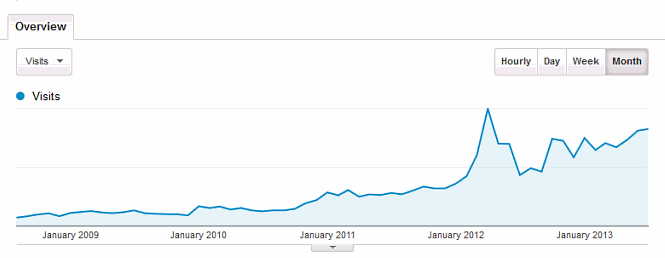
(Image by: Plastics)
-
Where are my visitors coming from?
Segment your visitors based on channels, sources/medium, and referrals and find out which digital campaigns or channels are most effective and which ones need improvement.
You can also segment to identify which referral websites are driving the most traffic to your website. This assessment helps you find potential business partners or content websites that produce the best return.
For example, you may discover that your guest blogs on Social Media Today are driving more traffic to your website than Business2Community. In that case, you may decide to contribute more content on Social Media Today than Business2Community because it delivers a better return. You may also want to analyse the content you’ve been contributing to Business2Community to determine whether different topics might attract more visitors.
To segment web traffic based on different channels, sources/mediums, and referrals, use the Acquisition feature.
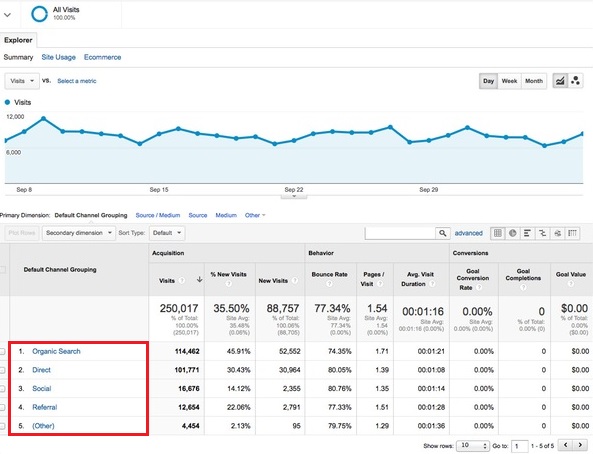
(Image by: Marketing Land)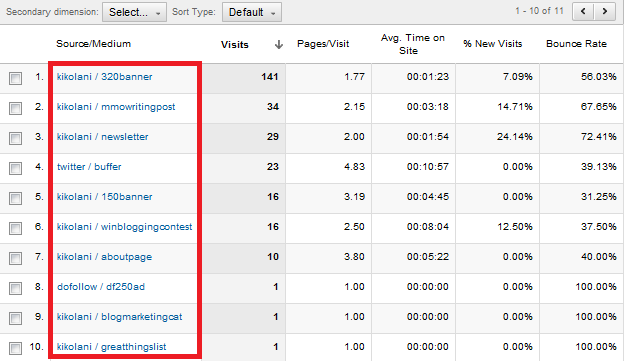
(Image by: KISSmetrics)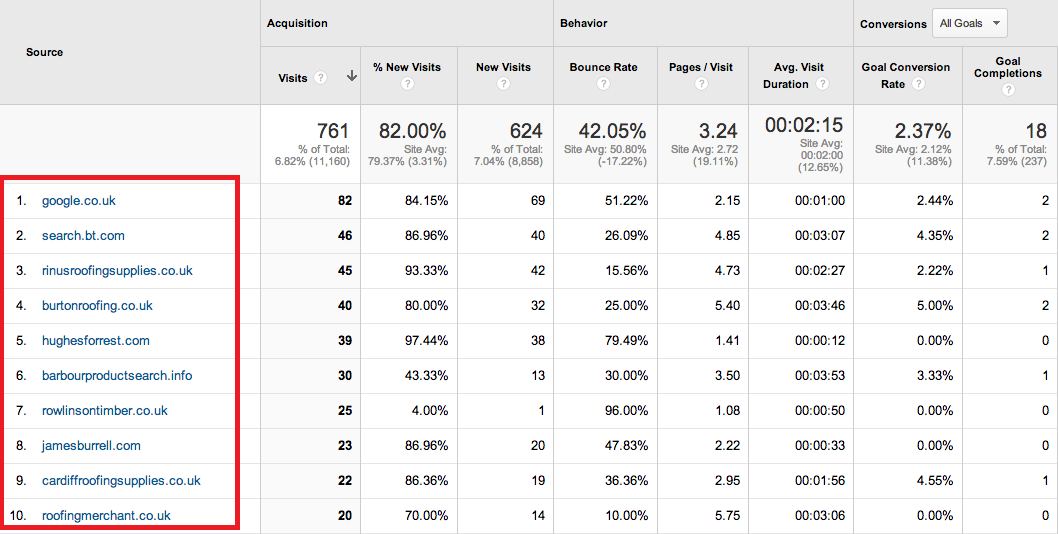
(Image by: Pauley Creative) -
What do I want visitors to do on my website?
Your website serves as a digital channel to reach your business goals. The site should help your company attract more prospects, engage with your audience, or convert more sales.
You can determine whether your website is achieving these three objectives by finding out whether your visitors are taking actions such as:
• Subscribing to your newsletter
• Visiting your product or service page
• Submitting a contact form
• Reading your blog posts
• Registering for a workshop
• Purchasing an offering
To find out whether your visitors are performing the actions above, use the following four tactics:
• Top entry pages analysis. Find out which webpages your visitors are landing on most frequently. This information tells you which entry webpages need strong call-to-actions so you can drive a majority of your traffic to targeted pages such as your service or contact form page.
To perform a top entry pages analysis, click on Behavior, Site Content, and then Landing Pages.
From there, you can see which webpages your audience lands on most often when entering your website.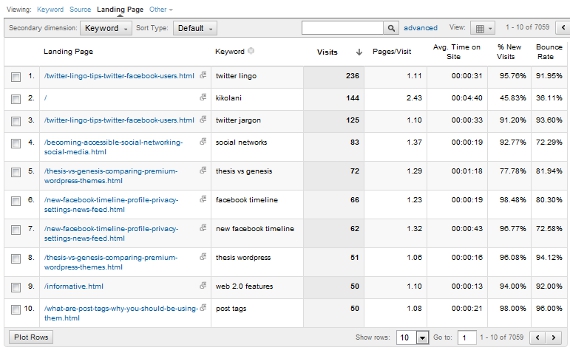
(Image by: Smart Insights)
• Top viewed pages analysis. Discover which pages are most viewed so you can optimize these webpages by adding stronger call-to-actions and links to targeted pages (e.g. service pages).To find out your top viewed pages, Behavior, Site Content, and All Pages.
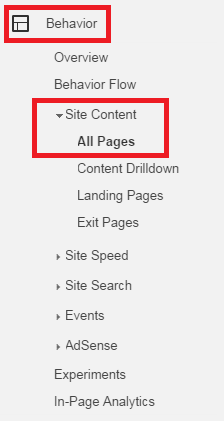
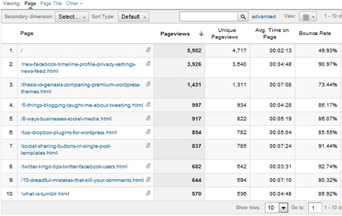
• Goal conversion analysis. Set up conversion goals in Google Analytics to help you keep track of targeted actions performed.
For example, you can create goals to track the number of newsletter subscriptions or contact form submissions.
To create a goal, go to Admin, click on Goals, and enter the Destination URL of the goal.
For example, if you want to track the number of newsletter subscriptions, enter the ‘thank you’ page (e.g. www.example.com/thank-you-newsletter) a visitor sees after he has signed up to your newsletter).
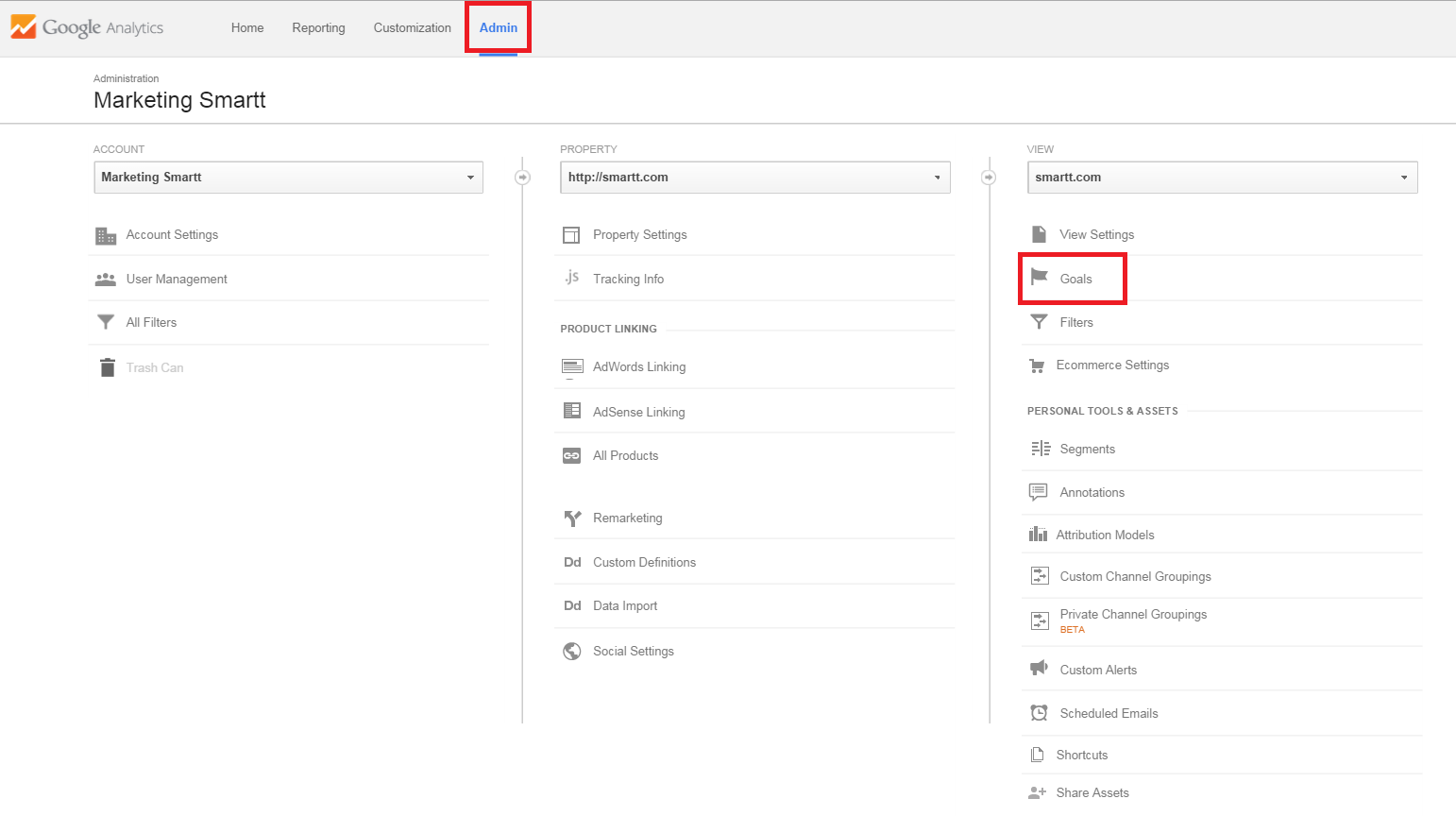
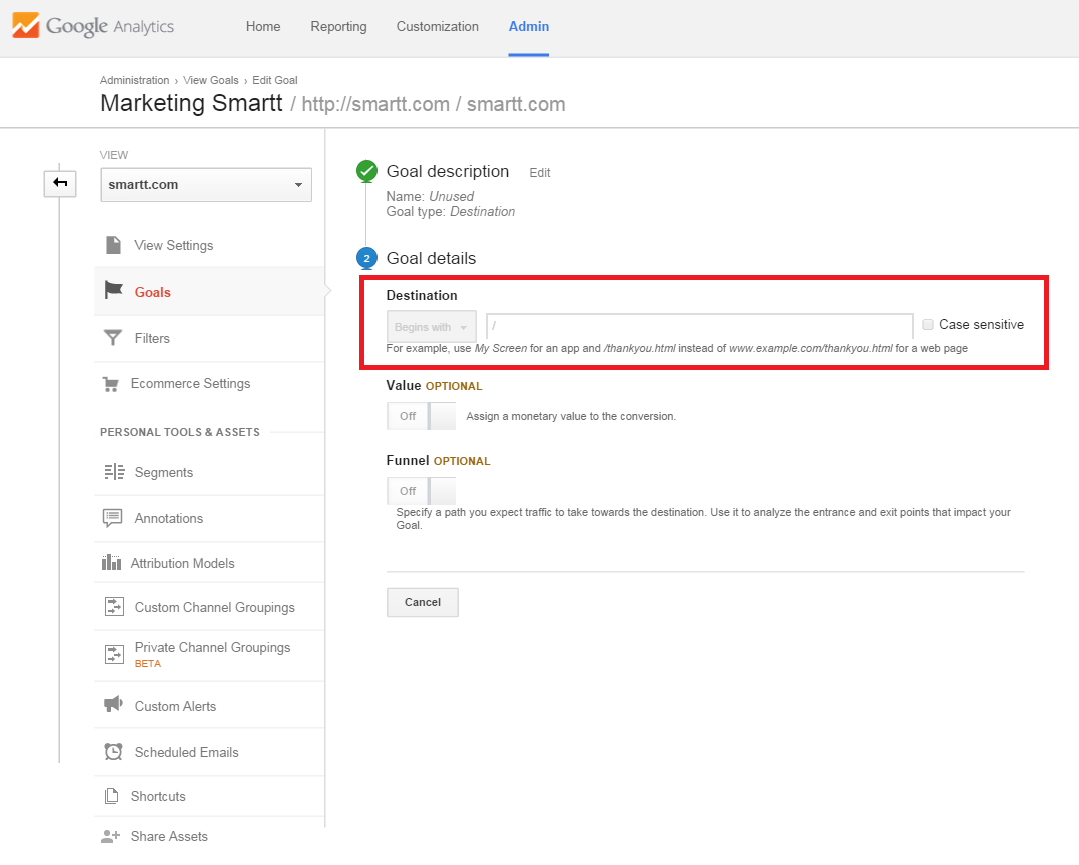
In addition, after you’ve set up goals, you can use features such as Reverse Goal Path, Assisted Conversions, Time Lag, and Path Length to gain a better understanding of the sales cycle so you can make improvements where necessary.
• User flow analysis. Use the User Flow feature to gain a visual overview of the paths visitors take on your website. Similar to the analyses above, the User Flow analysis helps you find out which webpages your visitors are exiting from, how visitors are browsing on your website, and whether your visitors are visiting targeted webpages. If you discover that visitors aren’t visiting targeted webpages or dropping out after visiting the entrance page, you can increase traffic flow to your webpages by including strong CTAs on entrance pages.
To access the Users Flow report, click on Audience and Users Flow.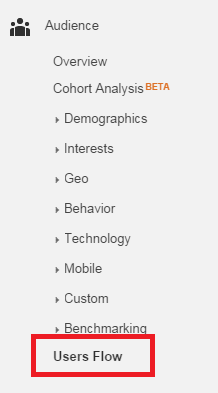
Asking the four questions above will help you unravel your main business objectives, develop relevant and useful metrics, determine important webpages you want visitors to visit, and understand the path flow of your web visitors. Doing so will help you identify webpages you should optimize to increase the number of web conversions and user engagement.
If you have questions about Google Analytics, please contact us via contact form. If you want to learn more about Google Analytics, register for our 2-day Google Analytics training course.


